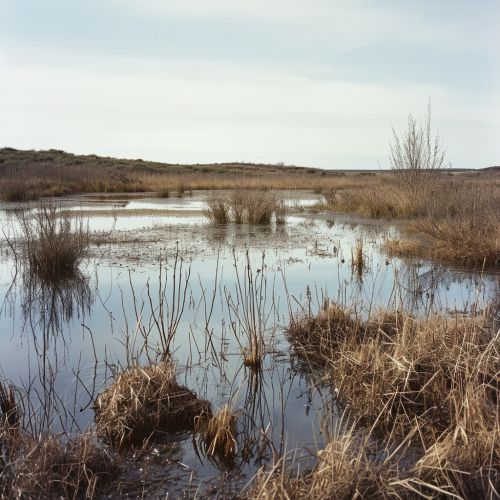Wetland Succession
Introduction
Wetland succession is a process that involves the change in structure and species composition of a wetland ecosystem over time. This process is driven by the interactions between organisms and their environment, leading to a predictable sequence of changes in the wetland's physical and biological characteristics.
Primary Succession
Primary succession in wetlands begins in an area where no previous community of organisms existed, such as a newly formed lake or pond. The first organisms to colonize the area are typically pioneer species, which are adapted to survive in harsh, unstable conditions. These species, including certain types of algae and bacteria, begin to alter the environment, making it more suitable for other species to inhabit.


As the pioneer species die and decompose, they contribute to the formation of soil in the wetland. This soil provides a substrate for plants to grow, leading to the establishment of a plant community. The types of plants that grow in the wetland depend on various factors, including the wetland's hydrology, soil type, and climate.
Secondary Succession
Secondary succession occurs in wetlands that have been disturbed or altered in some way, such as through fire, flooding, or human activity. This type of succession begins with a stage of recovery, where the remaining organisms begin to repopulate the area. The rate of secondary succession is typically faster than primary succession, as the soil and other necessary resources are already present.
As the wetland recovers, its community structure and species composition begin to change. Early successional species, which are adapted to disturbed environments, are gradually replaced by late successional species that are more competitive in stable environments. This process continues until the wetland reaches a state of equilibrium, known as the climax community.
Factors Influencing Wetland Succession
Various factors can influence the rate and direction of wetland succession. These include the wetland's hydrology, nutrient availability, disturbance regime, and the presence of keystone species. For example, a wetland with a high water table may favor the growth of hydrophytic plants, which can tolerate or require saturated conditions. Similarly, a wetland with a high nutrient availability may support a diverse community of plant and animal species.
Disturbances, such as fire or flooding, can interrupt the process of succession and set the wetland back to an earlier stage. However, disturbances can also create opportunities for new species to colonize the area and contribute to the wetland's biodiversity. Keystone species, which have a disproportionate effect on their environment relative to their abundance, can also influence the direction of wetland succession.
Implications of Wetland Succession
Understanding wetland succession is important for wetland management and conservation. By predicting how a wetland will change over time, managers can make informed decisions about how to protect and restore these valuable ecosystems. For example, if a wetland is predicted to transition into a forested wetland due to succession, managers may choose to intervene to maintain the wetland's open water habitat.
Wetland succession also has implications for biodiversity and ecosystem services. As a wetland changes over time, it can support a diverse array of plant and animal species, each of which contributes to the wetland's overall ecological function. Furthermore, the process of succession can enhance the wetland's ability to provide important ecosystem services, such as water purification, flood control, and carbon sequestration.
